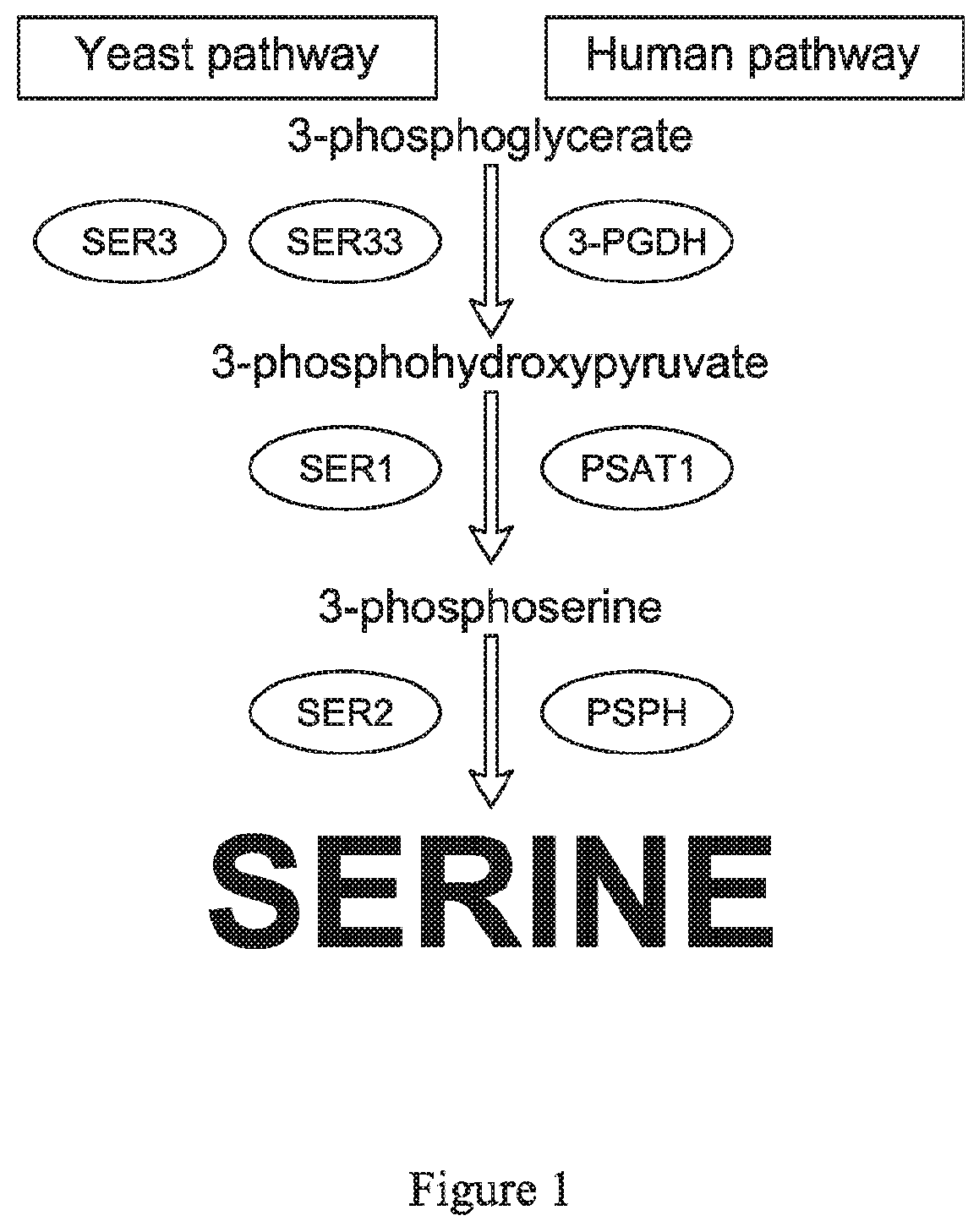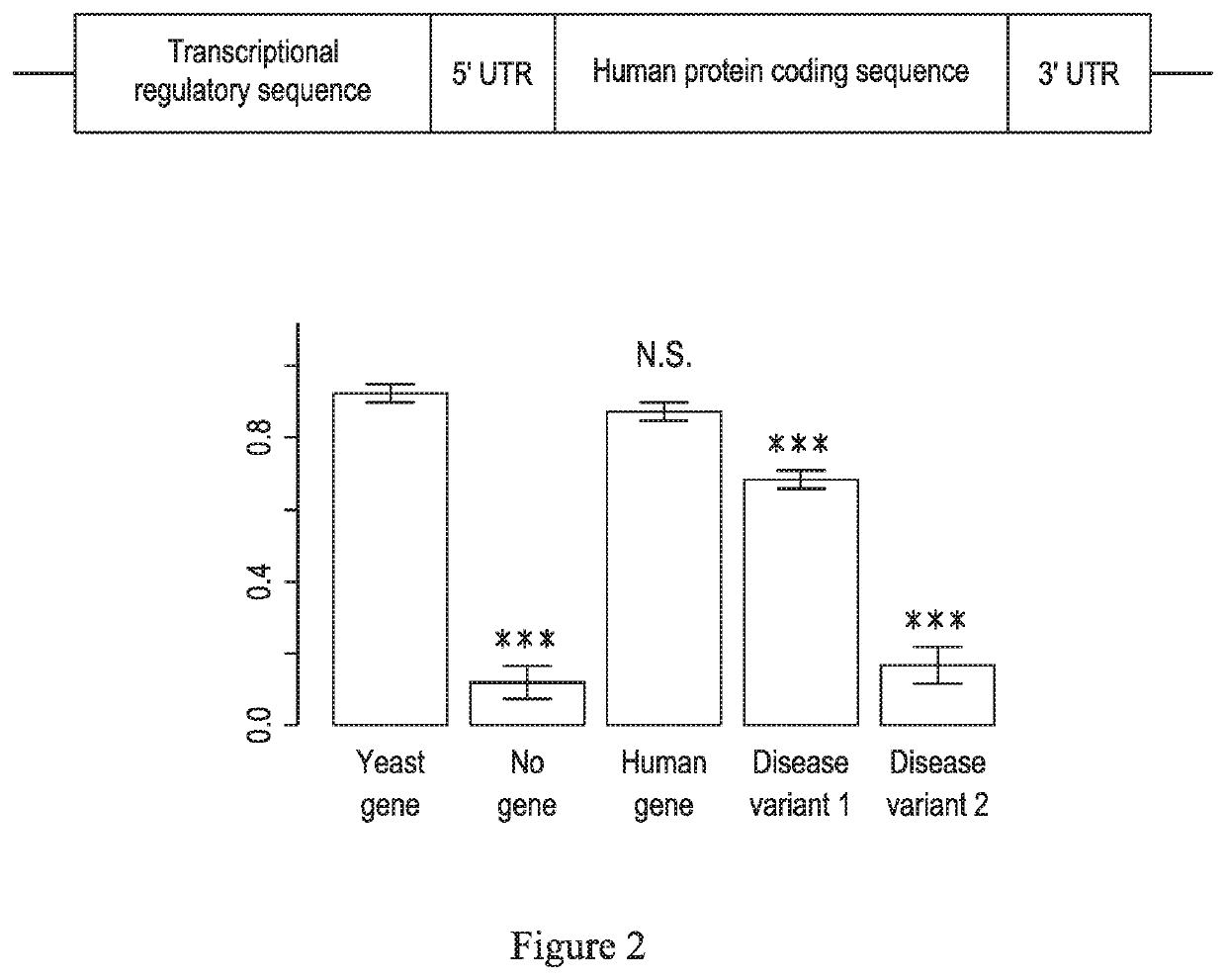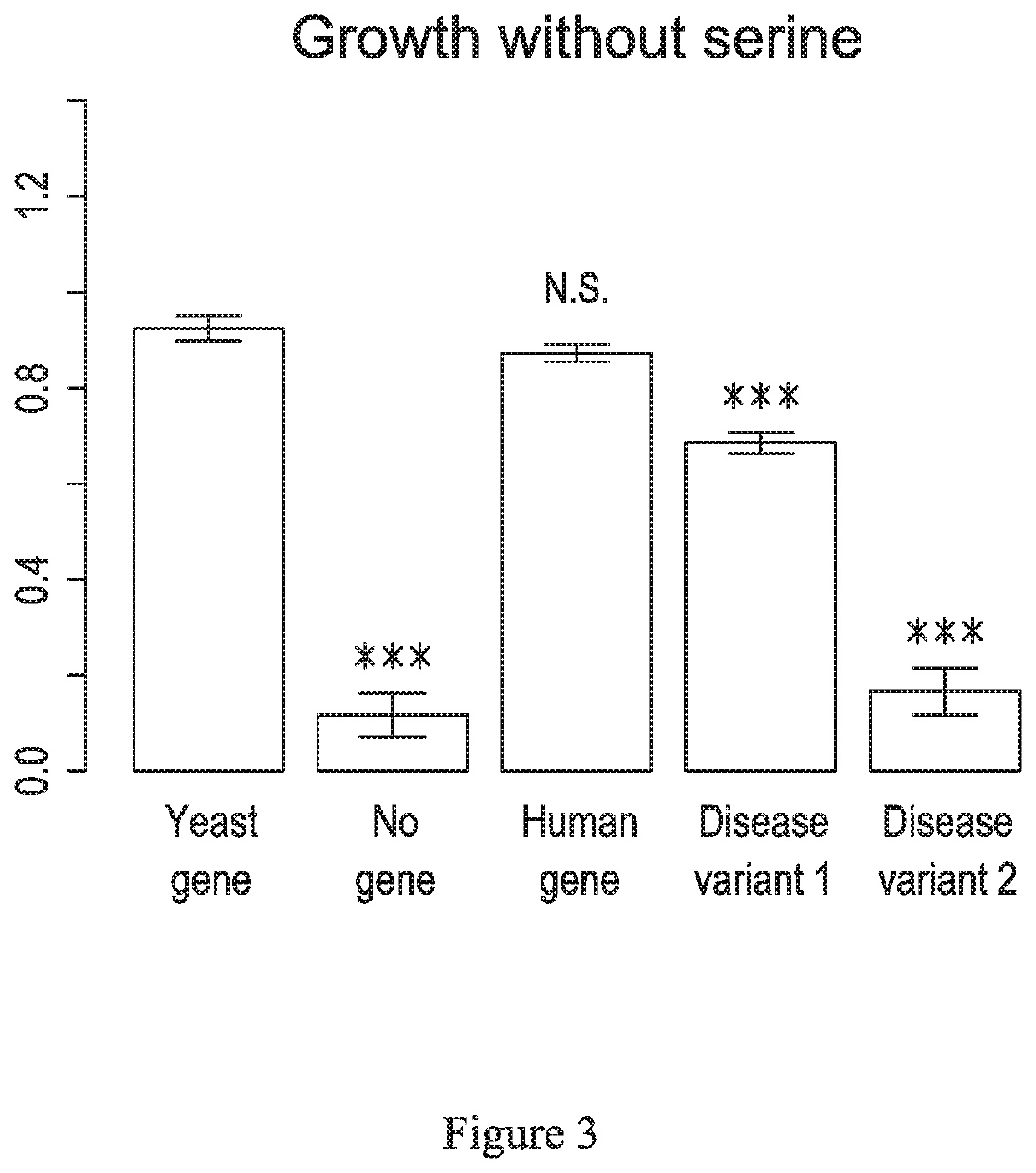Methods of detecting amino acid deficiencies
a technology of amino acid deficiencies and amino acids, applied in the field of amino acid deficiencies detection, can solve the problems of severe growth delay, infants with nls may be stillborn, and develop life-threatening complications, so as to prevent or ameliorate the onset of symptoms, reduce or even eliminate disease symptoms, and prevent or eliminate symptoms
- Summary
- Abstract
- Description
- Claims
- Application Information
AI Technical Summary
Benefits of technology
Problems solved by technology
Method used
Image
Examples
example 1
r Determination of PSAT Variant Function
[0075]As shown in FIG. 2, the human protein coding sequence of the PSAT1 gene can functionally replace the corresponding SER1 gene in yeast. This single copy can be stably integrated into the genome under the control of the native yeast regulatory sequences for transcription, translation, and mRNA stability with the nucleic acid comprising the sequence as shown in FIG. 2.
[0076]The PSAT1 sequence was codon optimized for expression in yeast (SEQ ID NO: 1:
ATGGACGCGCCAAGACAGGTTGTGAATTTCGGACCTGGGCCAGCTAAATTGCCTCACTCTGTTTTGTTGGAAATCCAGAAAGAGTTATTAGATTATAAAGGTGTAGGTATATCAGTCTTGGAAATGTCTCACCGTTCGTCTGATTTCGCCAAAATAATTAATAACACCGAGAACTTAGTTAGGGAACTGCTAGCCGTTCCTGACAACTATAAAGTGATTTTTTTGCAAGGTGGTGGCTGCGGTCAATTTTCTGCCGTTCCTTTAAATTTGATAGGTTTAAAAGCGGGTAGATGTGCCGACTATGTCGTCACCGGTGCGTGGTCTGCTAAAGCCGCTGAAGAGGCAAAGAAATTCGGTACTATCAACATTGTTCATCCAAAGTTGGGCTCTTACACTAAAATTCCGGATCCATCCACATGGAATTTAAATCCCGATGCATCATACGTGTACTACTGTGCTAATGAAACTGTTCATGGTGTTGAATTTGACTTTATTCCAGA...
example 2
r Personalized Yeast Models for Affected Individuals and Carriers
[0084]Diploid strains carrying PSAT1 / PSAT1, PSAT1 / A99V and PSAT1 / S179L were prepared. These diploid strains were prepared by mating haploid cells each containing one of the two variants, e.g. A99V and S179L. The resulting diploid cell is heterozygous for the two variants. Homozygous diploid strains and strains that are heterozygous for a wildtype and mutant version of the gene, e.g. PSAT1 / A99V, are made in the same way. The yeast cells were then analyzed for growth in YPD media that lacked serine. This test may also be performed in agar plates or liquid media for assessment of cell growth. As shown in FIG. 8, the diploid cells PSAT1 / A99V and PSAT1 / S179L were shown to function above the pathogenic threshold, which indicates that the protein is predicted to be functional, however the proteins have reduced activity as compared with the PSAT1 / PSAT1 homozygous. The pathogenic threshold may be calculated for different hetero...
example 3
t of Diploid Yeast Strains Carrying PSAT Mutations for Personalized Model Systems
[0086]As shown in FIG. 9, the growth values of several haploids in the absence of serine for haploid strains containing the PSAT1 variants listed above each bar. The cells are grown in the methods previously described in which the media is lacking the essential amino acid, serine. From left to right is PSAT (control), A15V, A99V, c.delG107, D100A, D145Mfs*49, G78A, R213C, R342Dfs*6, S179L, S43R and S43R. N is the number of replicates. Y is the median growth value. NS or asterisks indicate the results of t-tests between a variant and PSAT1 (control). These are all alleles that have been associated with disease in the literature. A15V, A99V, c.delG107, D100A, D145Mfs*49 and S179L are considered in the literature as being pathogenic, G78A, R213C and S43R are annotated as variants of uncertain significance (VUS). As shown, the haploid cells carrying the mutant PSAT1 gene have a decreased function, with the ...
PUM
| Property | Measurement | Unit |
|---|---|---|
| optical density | aaaaa | aaaaa |
| amino acid deficiency disorder | aaaaa | aaaaa |
| size | aaaaa | aaaaa |
Abstract
Description
Claims
Application Information
 Login to View More
Login to View More - R&D
- Intellectual Property
- Life Sciences
- Materials
- Tech Scout
- Unparalleled Data Quality
- Higher Quality Content
- 60% Fewer Hallucinations
Browse by: Latest US Patents, China's latest patents, Technical Efficacy Thesaurus, Application Domain, Technology Topic, Popular Technical Reports.
© 2025 PatSnap. All rights reserved.Legal|Privacy policy|Modern Slavery Act Transparency Statement|Sitemap|About US| Contact US: help@patsnap.com



